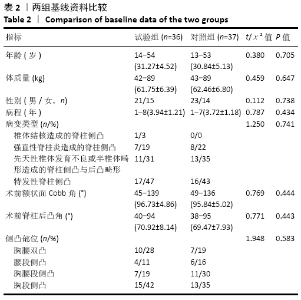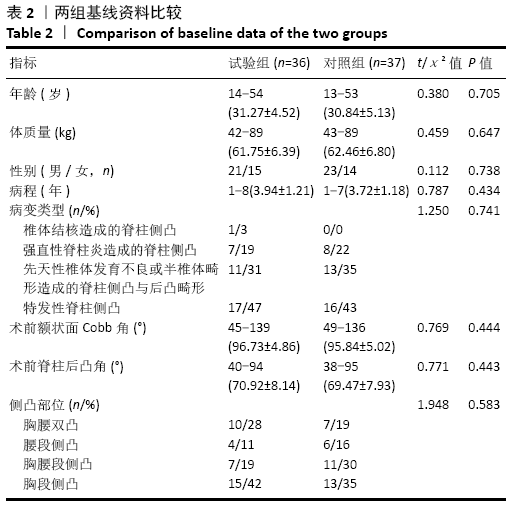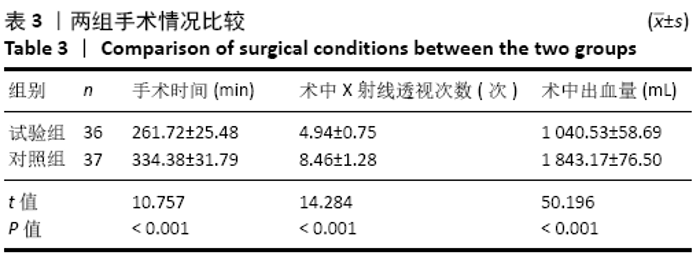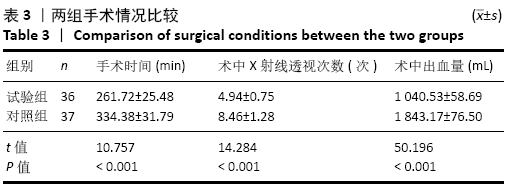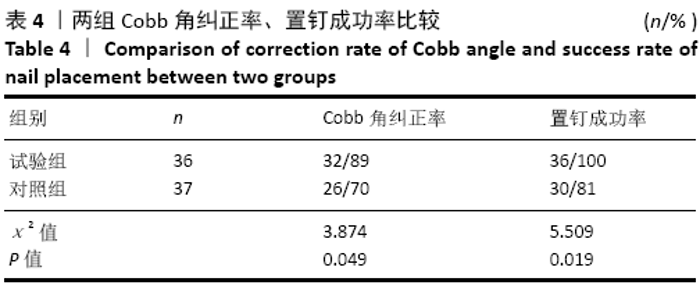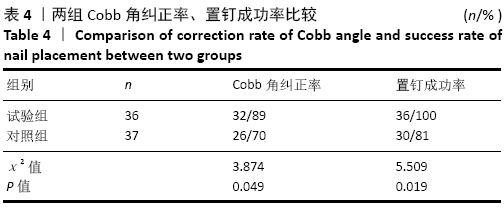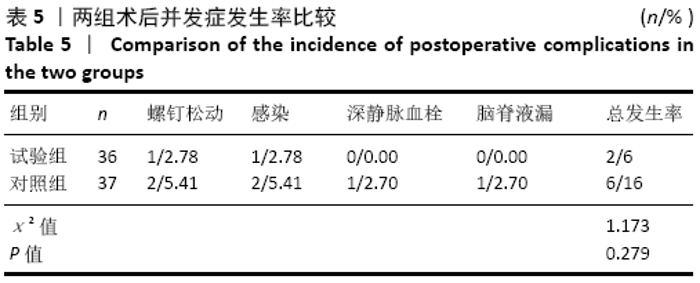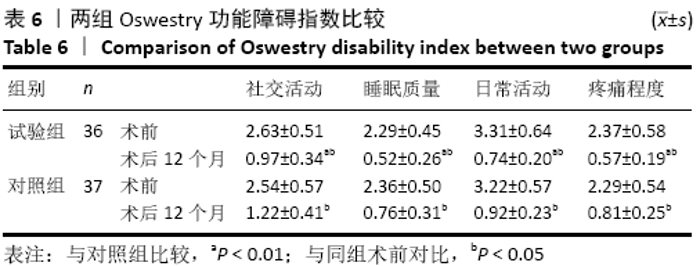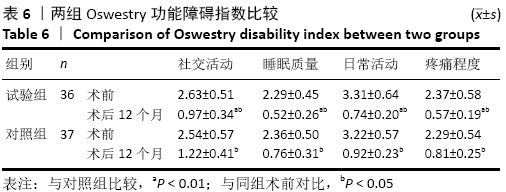[1] Scheer JK, Keefe M, Lafage V, et al. Importance of patient reported individualized goals when assessing outcomes for adult spinal deformity(asd):initial experience with a patient generated index(PGI). Spine J. 2017;17(10):1397-1405.
[2] 张国志,邓永成,陆晓涛.近端经皮椎弓根钉固定联合远端开放截骨矫形术治疗脊柱畸形[J].昆明医科大学学报,2018,39(9):56-61.
[3] KYRÖLÄ K, REPO J, MECKLIN JP, et al. Spinopelvic changes based on the simplified srs-schwab adult spinal deformity classification:relationships with disability and health-related quality of life in adult patients with prolonged degenerative spinal disorders. Spine. 2018;43(7):497-502.
[4] 王文刚,夏磊,罗明,等.椎弓根置钉导向器在重度脊柱畸形患者矫形手术中的应用[J].中国脊柱脊髓杂志,2019,29(5):407-413.
[5] 张小威,崔赓,王铀.CT导航辅助下椎弓根置钉术在椎体旋转型脊柱畸形矫正术中的应用研究[J].西北国防医学杂志,2018,39(1):28-31.
[6] 邵杰.机器人辅助导航与电子探测器导航在脊柱畸形矫正术中的临床应用[D].上海:中国人民解放军海军军医大学;第二军医大学,2017.
[7] 蒋维利,牛国旗,周功,等.3D打印技术辅助成人脊柱侧后凸畸形的术前规划及应用价值[J].中国骨伤,2020,33(2):99-105.
[8] 荆林凯,王贵怀,孙振兴,等.O型臂3D导航辅助置钉技术在脊髓脊柱肿瘤术中重建脊柱稳定性的应用[J].中华神经外科杂志,2019,35(7):676-680.
[9] 陈龙,海涌,关立,等.机器人辅助置入与徒手置入椎弓根螺钉的对比研究[J].中国骨与关节杂志,2017,6(10):730-736.
[10] JI H, DU W, XU C,等.计算机辅助截骨术指导和预弯钛板改善面部不对称矫正手术的规划[J].中国口腔颌面外科杂志,2019,17(2):158.
[11] 杨宇,刘大鹏,程奎,等.应用3D打印截骨导航模板进行胫骨截骨矫形的实验研究[J].中国数字医学,2017,12(1):58-60.
[12] 郑兵,李彬,田联房,等.脊柱手术个性化椎弓根螺钉的计算机辅助设计[J].计算机工程与应用,2018,54(4):218-224.
[13] 包同新,王宇峰,郭文杰,等.Wiltse入路与后正中入路TLIF术式对腰椎间盘突出症患者疗效及CK水平、NRS、ODI评分的影响比较[J].临床和实验医学杂志,2018,17(4):354-357.
[14] BOKSHAN SL, GODZIK J, DALTON J, et al. Reliability of the Revised Scoliosis Research Society22 and Oswestry Disability Index(ODI)Questionnaires in Adult Spinal Deformity When Administered by Telephone. Spine J. 2016;16(9): 1042-1046.
[15] SCHEER JK, PASSIAS PG, SOROCEAN AM, et al. Association between preoperative cervical sagittal deformity and inferior outcomes at 2-year follow-up in patients with adult thoracolumbar deformity:analysis of 182 patients. J Neurosurg Spine. 2016;24(1):108-115.
[16] 王铀,崔赓,张永刚,等.脊柱畸形手术术中CT导航与徒手椎弓根置钉准确性比较[J].解放军医学院学报,2015,36(6):595-598.
[17] 杨庆红,李宝田,李欣,等.独活寄生汤加减离子导入对椎间盘突出症脊柱内镜术后康复和残余症状的影响[J].中医学报,2017,32(6):1082-1085.
[18] 姚欣强,张晋元,王海明,等.虚拟现实平台在脊柱畸形截骨矫形手术中的应用[J].中国矫形外科杂志,2018,26(9):850-854.
[19] 杨勇.脊柱畸形矫正手术中应用计算机辅助技术结合3D打印模板的价值分析[J].中国伤残医学,2017,25(17):16-17.
[20] 任鹏飞,矫健航,张善勇,等.3D打印脊柱后凸模型体外模拟截骨在脊柱后凸畸形矫形手术的应用效果分析[J].中华骨与关节外科杂志,2019, 12(6):410-413.
[21] 丛琳,朱海涛,崔璀,等.机器人辅助皮下经肌间置钉技术微创治疗青少年特发性脊柱侧凸病例报告[J].中华骨科杂志,2018,38(22):1392-1394.
[22] 余定华,李科,廖世亮.3D打印技术在脊柱个体化手术中的应用进展[J].医学综述,2020,26(2):326-330.
[23] 郝申申,刘志斌,王飞,等.3D打印导航模板在脊柱侧凸矫形术中的初步应用[J].临床误诊误治,2018,31(6):56-59.
[24] 黄飞强,冯华龙,何升华.3D打印技术在退行性脊柱侧凸矫形中的运用[J].实用骨科杂志,2018,24(8):710-714.
[25] 翟功伟,高延征,高坤,等.脊柱机器人辅助与传统后路椎弓根螺钉内固定矫形术治疗脊柱侧凸的效果比较[J].中华实用诊断与治疗杂志, 2019,33(7):636-640.
[26] 伍涛,颜学亮,曹奇,等.3D打印定向导板联合低剂量氨甲环酸治疗脊柱畸形[J].实用医学杂志,2020,36(10):1334-1339.
[27] 胡超,史瑞超,周天宝,等.计算机三维重建与3D打印技术在儿童脊柱侧弯手术中的应用[J].中国数字医学,2019,14(10):71-73.
[28] 齐鹏,崔赓.导航系统在脊柱微创手术中应用的研究进展[J].中国骨与关节杂志,2018,7(10):52-57.
[29] 刘正蓬,王雅辉,褚立,等.3D打印技术辅助椎弓根螺钉置入治疗胸腰椎骨折的临床分析[J].实用骨科杂志,2018,24(11):970-974.
[30] WILCOX B,MOBBS RJ,WU AM, et al.Systematic review of 3D printing in spinal surgery:the current state of play. J Spine Surg. 2017;3(3):433-443.
[31] 刘少华,梅海波,叶卫华,等.3D打印技术在先天性脊柱侧弯矫正手术中的应用价值[J].医学临床研究,2019,36(1):59-61.
[32] 周驰雨,张莹,初同伟.计算机辅助术前矫正模型设计结合3D打印技术在脊柱畸形治疗中的应用[J].中国医学物理学杂志,2019,36(2):67-71.
[33] 李良生,芮钢,林山.3D打印技术在脊柱畸形矫正手术中的应用进展[J].中国骨科临床与基础研究杂志,2017,9(6):370-378.
[34] 王虹,丁焕文,刘宝,等.计算机辅助技术联合3D打印模板在脊柱畸形矫正手术中的应用研究[J].中国临床解剖学杂志,2016,34(4):392-396.
[35] HART RA,HIRATZKA J,KANE MS,et al. Stiffness after pan-lumbar arthrodesis for adult spinal deformity does not significantly impact patient functional status or satisfaction irrespective of proximal endpoint. Spine. 2017;42(15):1151-1157.
[36] 曾昌淳,朱泽章,王斌,等.经骶2骶髂螺钉固定的退变性侧后凸畸形患者骨盆入射角变化及其生活质量评估[J].中华骨科杂志,2019,39(16): 982-991.
[37] 叶青,陈建庭.后路半椎体切除联合椎弓根钉棒系统内固定对先天性脊柱侧凸患者术后Cobb角及生活质量的影响[J].中国地方病防治杂志, 2017,32(10):1132-1133.
[38] DEMIRKIRAN G, THEOLOGIS AA, PEKMEZCI M, et al. Adult spinal deformity correction with multi-level anterior column releases:description of a new surgical technique and literature review. Clin Spine Surg. 2016;29(4):141-149.
[39] 应辉,李增春.后路长节段固定治疗成人退行性脊柱畸形的疗效及其远端并发症[J].临床和实验医学杂志,2017,16(23):2353-2356.
[40] YOSHIDA G, KUROSU K, YAMATO Y, et al. Novel measurement technique for the sagittal vertical axis and its clinical application in adult spinal deformity. Asian Spine J. 2017;11(2):190-197.
|


